If I see an article on the Internet or in paper publication worth reading, I take notes of the gist of the article and secure its reference. If it contains valuable and practical information, then it is worthy of passing on to others.
I’ve accumulated a few such articles over the last months. What follows is a brief synopsis of these articles and the related research links. I’m hopeful they give you a greater insight to facilitate better training and nutrition.
If I see an article on the Internet or in paper publication worth reading, I take notes of the gist of the article and secure its reference. If it contains valuable and practical information, then it is worthy of passing on to others.
I’ve accumulated a few such articles over the last months. What follows is a brief synopsis of these articles and the related research links. I’m hopeful they give you a greater insight to facilitate better training and nutrition.
For the Best Fat Loss, Don’t Run
Nate Miyaki wrote an excellent piece on T-Nation regarding cardio training for fat loss. Let’s take a look at what we can learn from him and others who share his opinion.
When it comes to running, people typically have one or more of these reasons:
- Improved sport performance
- General performance enhancement and health benefits
- Stress relief obtained by the endorphin rush
- A love of running and competing
These are all fine justifications for running. If it makes you happy, go for it. But if you’re running as a means of reducing body fat, you have better options.
“The key is to elevate your resting metabolic rate (via anaerobic work) to promote better post-workout fat burning and muscle building.”
Look at true runners – marathoners. Their training is primarily (relatively speaking) low-intensity and non-muscle-building. No one is tackling or colliding with them. They don’t normally find themselves in compromised positions (e.g., changing multiple directions, landing awkwardly). They’re in control of their mostly straight-line task.
But distance running is a contact sport. It involves thousands of single-leg collisions with the ground. Over time, it creates havoc on your joints.
In his article, Miyaki expounded on the downside of cardio and why traditional cardio is poor for fat loss. The majority of your training should be anaerobic (strength training/interval training), as opposed to aerobic (traditional lengthy and low-level) in nature.
Attempting to alter your physique goes beyond simple calories in versus calories out. The key is to elevate your resting metabolic rate (via anaerobic work) to promote better post-workout fat burning and muscle building. And yes, diet is important here.
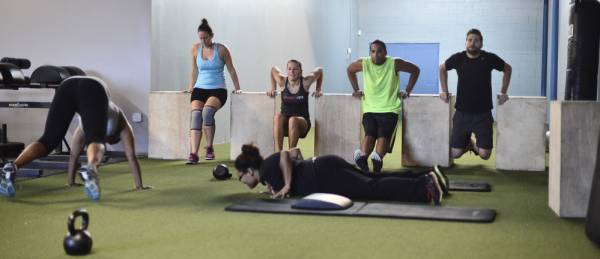
Strength training, high-intensity interval training (HIIT), and anaerobic-based circuit training are much better options than long-distance running or plodding away on a treadmill for an hour.
The calories in versus calories out faction run into issues. Over-the-top aerobic exercise coupled with a large reduction of calories consumed leads to decreased muscle tissue (the muscle gets used as energy) and the tendency to store more body fat as a survival mechanism. This is not good.
For optimal fat loss and lean tissue gains, go in this order of priorities:
- Diet
- Strength training
- Cardio – interval training
- Cardio – long, steady state
The Research on High-Intensity Interval Exercise
Unless you have had your head buried in the ground like an ostrich, you should by now have figured out high-effort interval training is a spectacular exercise option. (I’ll admit, I’ve been to the zoo and have yet to see an ostrich with its head in the ground, so maybe it’s time to use another analogy. Either way, you get my point.)
“If the benefits of a forty-minute training session can be obtained from a twenty-minute higher-effort training session, why would you not opt for the more time-efficient session?”
Brief repeated sessions of high-intensity interval exercise garner changes that are elicited by traditional endurance training. Think about it. If the benefits of a forty-minute training session can be obtained from a twenty-minute higher-effort training session, why would you not opt for the more time-efficient session?
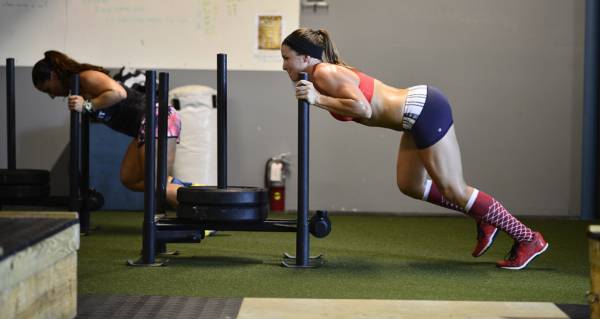
Most studies use prolonged exercise involvement; however, but this 2009 study published in Applied Physiology, Nutrition, and Metabolism showed a small dose of intense interval exercise – equivalent to two-minutes of all-out cycling – was sufficient to improve gains. As little as six sessions of HIIT performed over two weeks – a total of fifteen minutes of all-out effort – increased maximal activity of the cell factory (mitochondria) and improved performance during tasks that previously relied on aerobic energy activation. HIIT increased the potential for glucose and fatty acid oxidation. Wow.
“[A] small dose of intense interval exercise – equivalent to two-minutes of all-out cycling – was sufficient to improve gains.”
The Battle Over Fat Consumption
Authority Nutrition put together a great set of facts explaining how the war against saturated fat has to be one of the largest misconceptions in the annals of human nutrition. It’s an emotional issue with both sides strongly hanging on to their arguments based on the science that is promulgated to everyone, whether it is peer-reviewed or not.
So, good gracious, what should we take as proven facts and proven crap? How about these discussion points?
- Over the years that humans have reduced the intake of animal fat and cholesterol, numerous diseases have increased. Currently, we are experiencing a worldwide endemic of obesity, metabolic syndrome, and type 2 diabetes.
- Over the past few decades, studies conclusively showed the culprit of heart disease is neither saturated fat nor dietary cholesterol.
- The low-fat recommendations were based on specious studies that have been thoroughly proven wrong. (So that package of low-fat Sun Chips may be okay after all. Maybe.)
- Europeans consuming the most saturated fats have the lowest risk of heart disease.
- In 1977, the low-fat diet was promoted to all Americans. The obesity epidemic started at almost the exact same time these low-fat guidelines were revealed.
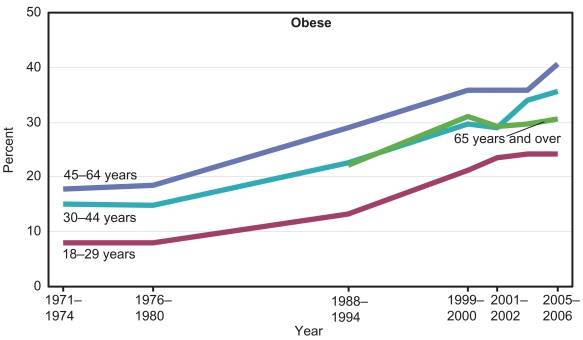
Courtesy of National Center for Health Statistics (US). “Health, United States, 2008: With Special Feature on the Health of Young Adults.” Hyattsville (MD): National Center for Health Statistics (US); 2009 Mar. Chartbook.
Many large studies have concluded low-fat diets do not cause weight loss and have a negligible effect on long-term cardiovascular disease. Women who ate a high-fat and low-carbohydrate diet until satiated actually lost twice as much weight as compared to those who ate a restricted low-fat diet. Additionally, all major risk factors for heart disease and diabetes declined.
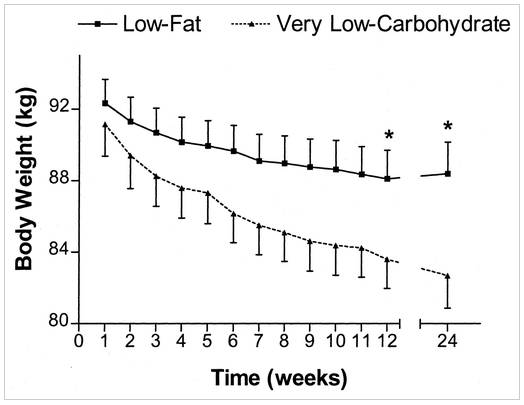
Courtesy of Brehm BJ, et al. “A randomized trial comparing a very low carbohydrate diet and a calorie-restricted low fat diet on body weight and cardiovascular risk factors in healthy women.” The Journal of Clinical Endocrinology & Metabolism, 2003.
The heart disease epidemic began in 1930. The obesity epidemic started in 1977. Around 1990 is when the diabetes epidemic began. These diseases have increased even more as animal fats have been replaced with vegetable oils and trans fats.
When saturated fat began getting a bad rap relative to heart disease, high-fat dairy products such as butter were considered evil. Ironically, like with other nutrition beliefs, it turns out saturated fat is undamaging and trans fat is more dangerous.
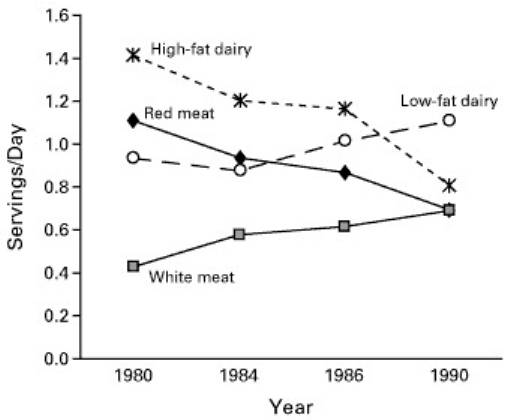
Courtesy of Hu FB, et al. “Trends in the Incidence of Coronary Heart Disease and Changes in Diet and Lifestyle in Women.” The New England Journal of Medicine, 2000.
My Advice to You
So there you have it – some solid science-based advice and research for you to sit down and spend some time with. My advice is to read as much as you can, study the facts, and be vigilant. What you have been doing may not be working, and what you thought wouldn’t work may have merit to it.
Check out these related articles on training, fat loss, and health:
- The Top 10 Best Training Exercises
- Why Steady State Cardio for Fat Loss Is a Bad Decision
- Go Anaerobic: What It Is and Why to Do It
- Folate, Alcohol, and Saturated Fat Benefit HDL Levels
References:
1. Miyaki, N. “The Best Damn Cardio Article – Period. ” T Nation. 14th October, 2014.
2. Gibala M., “Molecular responses to high-intensity interval exercise. “Appl Physiol Nutr Metab. 2009 Jun;34(3):428-32. doi: 10.1139/H09-046.
3. Gunnars, K., “6 Graphs That Show Why The ‘War’ on Fat Was a Huge Mistake.” Accessed January 7th, 2014.
4. Siri-Tarino, PW. et al., “Meta-analysis of prospective cohort studies evaluating the association of saturated fat with cardiovascular disease. “Am J Clin Nutr January 2010 ajcn.27725
5. Rong, Y. et al., “Egg consumption and risk of coronary heart disease and stroke: dose-response meta-analysis of prospective cohort studies.” BMJ 2013;346:e8539
6. Howard BV. et al., “Low-fat dietary pattern and weight change over 7 years: the Women’s Health Initiative Dietary Modification Trial. “ JAMA. 2006 Jan 4;295(1):39-49.
7. No authors listed. “Multiple Risk Factor Intervention Trial: Risk Factor Changes and Mortality Results.” JAMA. 1982;248(12):1465-1477.
8. Brehm BJ. et al., “A Randomized Trial Comparing a Very Low Carbohydrate Diet and a Calorie-Restricted Low Fat Diet on Body Weight and Cardiovascular Risk Factors in Healthy Women“ J Clin Endocrinol Metab. 2003 Apr;88(4):1617-23.
9. Lopez-Garcia, E., et al, “Consumption of Trans Fatty Acids Is Related to Plasma Biomarkers of Inflammation and Endothelial Dysfunction. “ J. Nutr. March 1, 2005 vol. 135 no. 3 562-566
Photos courtesy of CrossFit Empirical.






